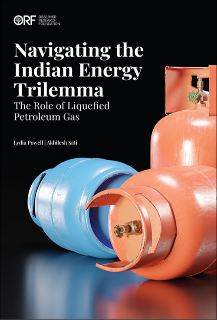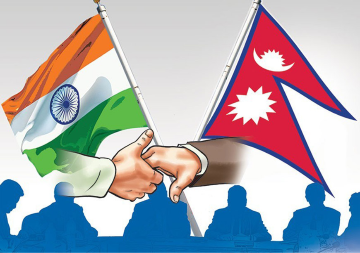With the Taliban in power in Kabul, the gap will now only widen
Marking the eastern and western contours of South Asia, the countries of Bangladesh and Afghanistan are separated by more than just a geographical distance of 2,474 km. Endowed with similar inheritances of an experience of war, extremist threat, and governance by fledgling democracies, the two Islamic countries could not be more distinct from each other than they are today.
Indeed, the Taliban takeover of Afghanistan in mid-August this year has widened the faultline even further, with apprehensions mounting across the world about the country’s return to dark ages, while Bangladesh is increasingly viewed as an exemplar in overcoming its multiple challenges. Their contrasting trajectories are likely to shape the narratives of the victor and the victim of circumstances.
In the 1970s, both Bangladesh and Afghanistan faced war, the former to secure its liberation from Pakistan and the latter caught in a civil war between the communist government backed by the Soviets and the anti-communist Islamist guerrillas known as the mujahideen.
While the war ended for Bangladesh within a few months, in Afghanistan it dragged on for over nine years, reducing the country to a dilapidated state. The Bangladeshi nationalists led by the Awami League subsequently laid the foundation of a democratic and secular government. In Afghanistan too the war had been won by the nationalists, but of a different vintage -- the Taliban who harboured a different and destructive ideology.
Differences in worldview
In the years that followed, under the progressive vision of Sheikh Mujibur Rahman, Bangladesh prioritized development, embarking on a journey of growth, with the principles of socialism and secularism serving as its guiding lights. The picture was entirely different in Afghanistan, where the Taliban, upholding their beliefs in the Sharia law, implemented a medieval system of justice and governance, resulting in widespread brutality and destruction.
In the 1970s, both Bangladesh and Afghanistan faced war, the former to secure its liberation from Pakistan and the latter caught in a civil war between the communist government backed by the Soviets and the anti-communist Islamist guerrillas known as the mujahideen.
Under six years of the Taliban regime, the women were the worst affected. Their education was prohibited as was their employment. Restrictions were even imposed on their freedom of movement and their way of dressing. In Bangladesh by comparison, women empowerment has been one of the key drivers of the state’s development.
Owing to efforts by the non-governmental organizations like Grameen Bank and BRAC along with other governmental undertakings, Bangladesh made significant progress in educating the girl child and provided opportunities for women to have a strong voice in the public sphere.
Tackling terrorism
This is not to say that Bangladesh’s evolution has been smooth sailing. The country too has faced the rise of Islamist insurgent groups. For example, a Taliban inspired local radical network-Harkat-ul Jihad-al-Islami, Bangladesh was held responsible for several terrorist attacks including the 2004 grenade attack on the AL rally, from which Sheikh Hasina barely survived.
The Dhaka court held the opposition party BNP-Jamaat-e-Islami coalition responsible for using the HuJI-B to execute the attack. The same party had removed “secularism” as one of the central principles of the constitution by the 5th Amendment in 1977, and in 1988, it declared Islam as the state religion. Although the Supreme Court of the country later denounced the 5th Amendment as null and void and restored secularism in the constitution, Islam remained as the state religion.
In the 1970s, both Bangladesh and Afghanistan faced war, the former to secure its liberation from Pakistan and the latter caught in a civil war between the communist government backed by the Soviets and the anti-communist Islamist guerrillas known as the mujahideen.
Fundamentalism was, however, brought under control by Prime Minister Sheikh Hasina, who came to power in 2009. Since then, Bangladesh has been particularly successful in curbing Islamist radicalism within its territory, leading to political stability and commercial prosperity.
The core of the government’s success is rooted in the majority support that it enjoys throughout the country. The same unfortunately cannot be said for Afghanistan, where the democratic government which followed the Taliban’s defeat, was weak and relied intensely on US support for its existence.
The terrorist threat too was never really tamed as the insurgent groups continued to wage guerrilla war on the Afghan and US forces provoking counter-attacks, and development therefore could never become the Afghan government’s solitary focus.
Want of political autonomy
A strong and self-reliant government is essential for the development and well-being of any country. While that has been possible for Bangladesh, since it freed itself from the fretters chaining it to Pakistan, the same cannot be said for Afghanistan. Pakistan’s destructive role in Afghanistan has been the key factor behind the continued turbulence it faces.
While the US evidently remained in the country to provide stability to the nascent democratic government, other powers too tried to maintain a presence on Afghan soil. This has become even more apparent with the withdrawal of the US troops, and the Taliban takeover of Kabul.
It is no surprise that autonomous Bangladesh has increased its economic size by 271 times since its independence, and is being contemplated as a future “Asian Tiger.”
Pakistan and China are keen to recognize this new government, seeking to influence its policy directions. This is understandable given Afghanistan’s high reserves of non-fuel minerals, especially lithium, used in advanced weaponry. To what extent the new Taliban regime will imbibe external influences and how that will impact Afghanistan, still remains to be seen.
By contrast, it is no surprise that autonomous Bangladesh has increased its economic size by 271 times since its independence, and is being contemplated as a future “Asian Tiger.” Its per capita GDP has gradually grown higher than Pakistan and in 2020, it even surpassed India.
While Bangladesh’s prospects continue to grow, Afghanistan is now on the brink of an economic crisis. Circumstances have been difficult for both countries, undoubtedly more for Afghanistan, but it must be acknowledged that Bangladesh’s growth story is a remarkable example of overcoming odds through political initiative and a progressive world view.
Bangladesh’s arrival as one of the promising stories emerging from South Asia is a tribute to the fortitude and perseverance not only of the political leadership, but also of ordinary citizens who have remained focused on ensuring that their nation’s future will not be hostage of medieval ideas and ideology. As Afghanistan faces another inflection point in its turbulent recent history, there is much it can learn from the experiences of Bangladesh.
This commentary originally appeared in Dhaka Tribune.
The views expressed above belong to the author(s). ORF research and analyses now available on Telegram! Click here to access our curated content — blogs, longforms and interviews.




 PREV
PREV



